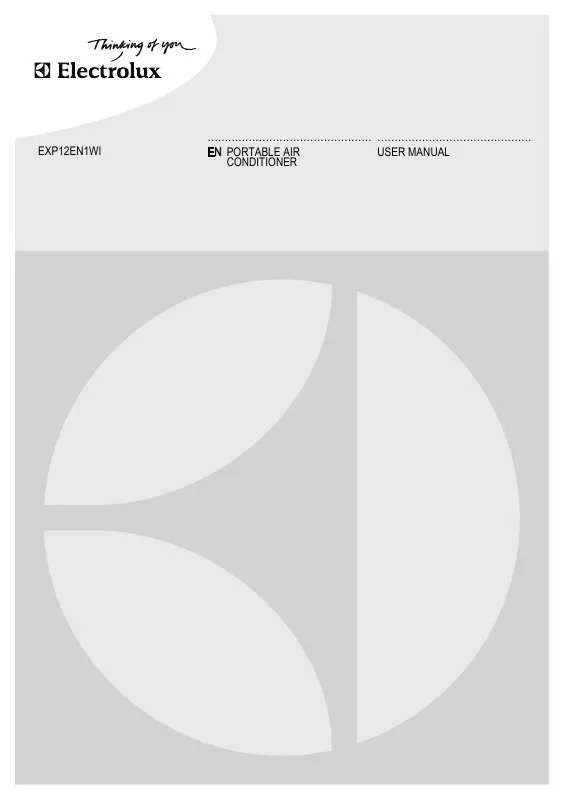Detailed instructions for use are in the User's Guide.
[. . . ] · The safety of Your appliance complies with the industry standards and with legal requirements on the safety of appliances. However, as manufacturers, we feel it is our duty to provide the following safety notes. · It is most important that this instruction book should be retained with the appliance for future reference. Should the appliance be sold or transferred to another owner, or should you move house and leave the appliance, always ensure that the book is supplied with the appliance in order that the new owner can get to know the functioning of the appliance and the relevant warnings. [. . . ] Ball point pen and glue: moisten with acetone1), lay the garment on a soft cloth and dab the stain. Lipstick: moisten with acetone as above, then treat stains with methylated spirits. Red wine: soak in water and detergent, rinse and treat with acetic or citric acid, then rinse. Ink: depending on the type of ink, moisten the fabric first with acetone1), then with acetic acid; treat any residual marks on white fabrics with bleach and then rinse thoroughly. Tar stains: first treat with stain remover, methylated spirits or benzine, then rub with detergent paste. Detergents and additives Good washing results also depend on the choice of detergent and use of the correct quantities to avoid waste and protect the environment. Although biodegradable, detergents contain substances which, in large quantities, can upset the delicate balance of nature. The choice of detergent will depend on the type of fabric (delicates, woollens, cottons, etc. ), the colour, washing temperature and degree of soiling. All commonly available washing machine detergents may be used in this appliance: · powder detergents for all types of fabric · powder detergents for delicate fabrics (60°C max) and woollens · liquid detergents, preferably for low temperature wash programmes (60°C max) for all types of fabric, or special for woollens only.
The detergent and any additives must be placed in the appropriate compartments of the dispenser drawer before starting the wash programme. If using liquid detergents, a programme without prewash must be selected. Your appliance incorporates a recirculation system which allows an optimal use of the concentrated detergent. SYNTHETIC 60°-30° Main wash - Rinses Maximum spin speed 900 rpm Max. load 1, 5 kg 1) Synthetic or mixed fabrics: underwear, coloured garments, non-shrink shirts, blouses. Options Detergent Compartment
SPIN, RINSE HOLD, NIGHT CYCLE, DAILY, LIGHT, QUICK, EXTRA RINSE
SPIN, RINSE HOLD, NIGHT CYCLE, EXTRA RINSE
SPIN, RINSE HOLD, NIGHT CYCLE, EXTRA RINSE
SPIN, RINSE HOLD, NIGHT CYCLE, DAILY, LIGHT, QUICK, EXTRA RINSE
2)
SPIN, RINSE HOLD, NIGHT CYCLE, DAILY, LIGHT, QUICK, EXTRA RINSE
2)
SPIN, RINSE HOLD, NIGHT CYCLE, DAILY, LIGHT, QUICK, EXTRA RINSE
electrolux 13 Programme Maximum and Minimum Temperature Cycle Description Maximum Spin Speed Maximum Fabrics Load Type of Laundry DELICATE 40°-30° Main wash - Rinses Maximum spin speed 700 rpm Max. load kg 1, 51) Delicate fabrics: acrylics, viscose, polyester. WOOL 40° Main wash - Rinses Maximum spin speed 900 rpm Max. load 1 kg Washing programme for machine washable wool as well as for hand washable woollens and delicate fabrics. Note : A single or bulky item may cause imbalance. If the appliance doesn't perform the final spin phase, add more items, redistribute the load manually and then select the spinning programme. HANDWASH 30°- Cold Main wash - Rinses Maximum spin speed 900 rpm Max. load 1 kg Special programme for delicate fabrics with «hand washing» care symbol. RINSES Rinses Maximum spin speed 1200 rpm Max. [. . . ] Connect the water inlet hose supplied with the machine to a tap with a 3/4" thread. Always use the hose supplied with the appliance. Before connecting up the machine to new pipework or to pipework that has not been used for some time, run off a reasonable amount of water to flush out any debris that may have collected in the pipes. Water drainage The end of the drain hose can be positioned in three ways.
Important! [. . . ]


